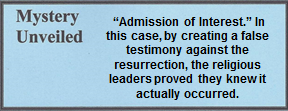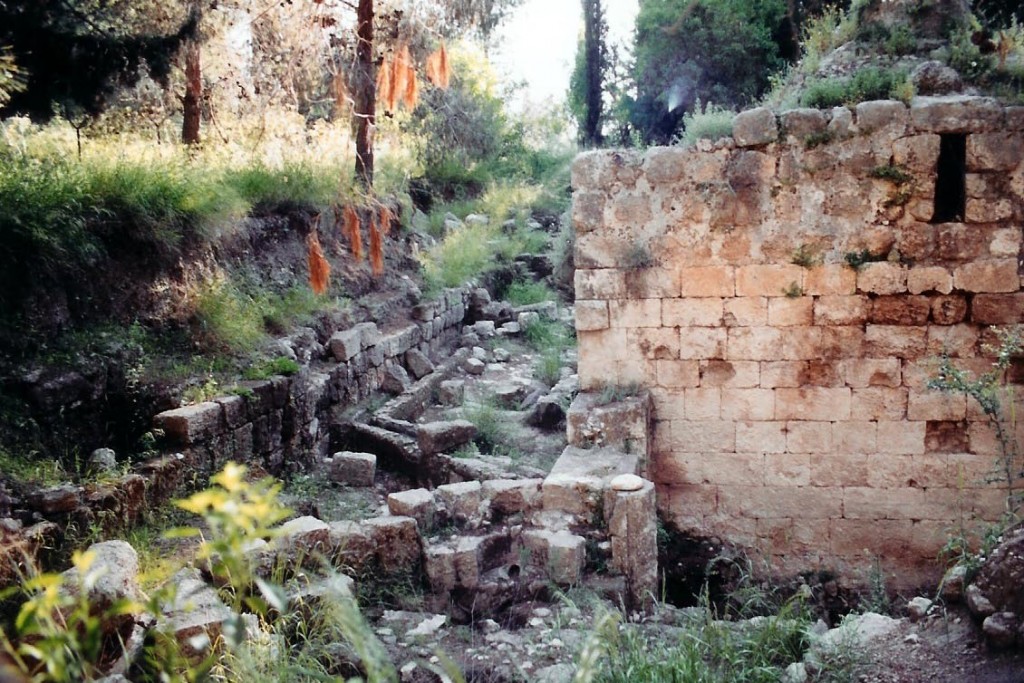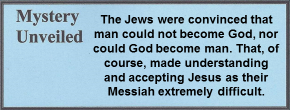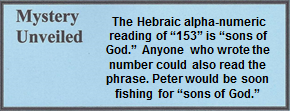18.01.09 Mt. 28:11-15
CHIEF PRIESTS TRY TO EXPLAIN THE MISSING BODY
11 As they were on their way, some of the guards came into the city and reported to the chief priests everything that had happened. 12 After the priests had assembled with the elders and agreed on a plan, they gave the soldiers a large sum of money 13 and told them, “Say this, ‘His disciples came during the night and stole Him while we were sleeping.’ 14 If this reaches the governor’s ears, we will deal with him and keep you out of trouble.” 15 So they took the money and did as they were instructed. And this story has been spread among Jewish people to this day.
The unanswered question of this account is – if the guards were asleep, how would they have known if the disciples had stolen the body? Origen, an early enemy of the faith who later converted, wrote an interesting account in his apologetic writing titled Against Celsus concerning the soldiers who guarded the tomb of Christ.
But after our Lord’s coming, those who busied themselves with overthrowing the belief that the place of His birth had been the subject of prophecy from the beginning, withheld such teaching from the people; acting in a similar manner to those individuals who won over those soldiers of the guard stationed around the tomb who had seen him arise from the dead, and [those same guards] who instructed these eye-witnesses to report as follows: “His disciples came during the night and stole him away while we were asleep.”
Origen, Against Celsus 1:51[1]
The emperor had some simple rules for his soldiers: If they lost a prisoner, they were sentenced to death. If they lost a military battle, they became slaves. Obviously they were not prone to take their assignments lightly. They guarded the tomb with the utmost diligence to insure no one would steal the body or they would lose their lives. The last thing they expected was for the stone to roll aside and Jesus to walk out. Evidently the experience of guarding a deceased body that suddenly came to life had a chilling effect on them.
18.01.09.Q1 What is an “Admission of Interest?”
In a court of law, there is an interesting phrase called an, “Admission of interest” but it is better understood as an “Admission against interest.” It essentially states that false testimonies against a certain person or event indirectly proves the point or position of the accused and, in reality, is a testimony against the accuser. In other words, the accusations that Jesus did not rise from the grave is a good argument for, but not “proof” that, He did rise from the grave.[2]

The false accounts concerning the resurrection began with the chief priests and have continued to this day. Members of the Sanhedrin could hardly believe what they were hearing. They had enough problems with the earthquake and the darkness, both of which were understood to be symbolic of God’s wrath. Furthermore, people who had recently died walked around Jerusalem, symbolic of a coming divine resurrection and God’s love. If the disciples were astonished at these events, those who condemned Him must have been panic-stricken!
Yet the major problem continued to be how a messiah could have been cursed on a Roman cross. How could a man, who had healed the sick and raised the dead, die the worst kind of death? How could Roman soldiers kill God’s appointed messiah? This event made no sense whatsoever. The full meaning of the divinity of Jesus was not comprehended until after His resurrection. Generations later, the descendants of the Pharisees made several references to Jesus.[3] But of interest here is the observation made by the historian Josephus.
Now, there was about this time Jesus, a wise man, if it be lawful to call him a man, for he was a doer of wonderful works – a teacher of such as men as receive the truth with pleasure. He drew over to him both many of the Jews, and many of the Gentiles. He was Christ; and when Pilate, at the suggestion of the principal men amongst us, had condemned him to the cross, those that loved him at the first did not forsake him, for he appeared to them alive again the third day, as the divine prophets had foretold these and ten thousand other wonderful things concerning him; and the tribe of Christians, so named from him, are not extinct at this day.
Josephus, Antiquities 18.3.3 (63-64)
Recent critics have claimed that this statement is not original with Josephus, but is a later addition by Christian editors. They present a good point in saying that such complimentary words would hardly have come from non-Christian Jews. Furthermore, if Josephus praised Jesus, why did he not do likewise for James, the brother of Jesus, when James was being stoned to death by Jewish rioters?[4]
While they present valid arguments, history however, appears to support the authenticity of the comment. The writings of Josephus were quickly translated into Arabic and Slavonic [Russian], before the original manuscript reached the Christian community, and his comments on Jesus appear in those translations as stated in English. At some point in history the Antiquities of the Jews was translated into Arabic with the same comment.[5] Another witness of this original work was Eusebius who mentioned it in his Ecclesiastical History (1.1.7-8) and in Demonstration of the Gospel (3.5.105-06), but then added the following:
When such testimony as this was transmitted to us by an historian who sprung from the Hebrews themselves, both respecting John the Baptist and our Savior, what subterfuge can be left to prevent those from being convicted destitute of all shame, who have forged the acts against them? This, however, may suffice on this subject.
Eusebius, Ecclesiastical History 1.11.9
The obvious difficulty for critics is how to explain how an editor could have added these comments after the original manuscript had been translated and distributed widely throughout the Roman Empire. There are four notable reasons as to why this statement (Antiquities 18.3.3) is considered to be original with Josephus and not a later insert by a copyist or editor.
- There are obvious Christian words missing. These are sometimes referred to as “Christian-eze;” those words commonly used by believers, even early believers, to express their thoughts and ideas, and these are missing.
- There four obvious expressions that were not used by the early church fathers, not anyone else who was a follower of Jesus. These expressions were Jesus as a
- “A wise man”
- “Doer of wonderful works”
- “Receive the truth with pleasure” and,
- “The tribe of Christians”
- Josephus also made a reference to James, the brother of Jesus, in Antiquities 20. This is important because Josephus made reference to James, based upon his previous description of Jesus in Antiquities 18. Therefore, the latter reference confirms the authenticity of the former.[6]
- Not a single copy of Josephus has been uncovered that does not have this comment about Jesus. In other words, what ancient copy is there that supports the claims of the critics? None!
Of particular note is the fact that followers of Jesus spoke often of His “miracles,” not His “works.” In addition, the word “tribe” would have some derogatory connotations to it. No Christian would have used it. Josephus, who was a well-respected Pharisee (like the Apostle Paul), but not a believer, carefully used words that in his Jewish thinking best described Jesus, without showing any loyalty to Him. Since he enjoyed a lavish retirement, granted by the emperor, he had to choose his words wisely.
“If this reaches the governor’s ears, we will deal with him and keep you out of trouble.” The lives of the guards were now in the hands of the Jews. It was common knowledge that Roman soldiers who failed to perform their duties were severely punished – usually by death. So this was an extremely important matter, one that would even make the emperor question as to what really happened.
An example of a soldier who failed to perform his duty as required was recorded by Gaius Petronius Arbiter (A.D. 27 – 66). He was a courtier for Emperor Nero and is credited with writing the satirical novel Satyricon. One of his characters is a true-life individual named Eumolpus, who reflected upon one of his life experiences – that of an Ephesian woman who was in the tomb of her husband where she mourned continuously of her loss. As the story goes, it was fortunate for the Roman soldier as his life was spared with the help of this grieving widow. As she mourns, some thieves were crucified nearby and Petronius continues the story –
Now at that moment the governor of the province gave orders that some robbers should be crucified near the small structure in which the lady was lamenting her loss. So, the next day, the soldier was on guard by the crosses to stop anyone from taking down the body for burial. He noticed a light glimmering quite distinctly among the tombs and heard the moans of a mourner.
At this point the soldier leaves his post and comforts the mourning widow, eventually seducing her. He returns to her night after night but his actions being noticed by the family of the crucified robber. Petronius continues –
So the parents of one of the crucified men, noting how careless the guard was, took the body down one night and performed the last rites over it. In his absence from duty the soldier was thus circumvented; and next day, finding one of the crosses without its corpse, he was scared at the prospect of punishment. He contemplated suicide, but the widow said, “I’d rather see a dead man crucified than a living man dead. She then asked him to remove her husband’s corpse from its coffin and secure it up on the empty cross … and the people wondered next day by what means the dead man had ascended the cross.
Petronius, Satyricon 111-112[7]
Without question, at times elements of humor enter life’s most horrific events. But the point is that guards who failed to perform their assigned duties often chose suicide rather than punishment. Therefore, the missing body of Jesus was truly a matter of life and death for the guards, who depended upon the wicked priests to save them.
“His disciples came during the night and stole Him.” This statement has been repeated by critics for centuries. The only problem is that the disciples clearly did not expect Jesus to rise from the grave. This has its own value, as it clears them of any suspicion of creating a report of a resurrection.
[1]. Bracketed notation by author for clarification. See also Justin Martyr, Dialog with Trypho. 1:253.
[2]. http://dictionary.law.com/Default.aspx?selected=2341. Retrieved October 2, 2013.
[3]. Jewish writers later made three references to Jesus in the two Talmuds: (1) He had immoral parents, namely his mother: Jerusalem Talmud, Tebamot 4:13, Babylonian Talmud, Shabbath 104b, and Babylonian Talmud, Sanhedrin 106a; (2) He was a magician and idolater: Babylonian Talmud, Sanhedrin 107b; and (3) Jesus was a heretic and blasphemer: Babylonian Talmud, Sanhedrin 103a and Babylonian Talmud, Taanit 65a. Another reference written later and, therefore, not a part of the Talmuds known as the Toidat Yeshu, is considerably friendlier to Jesus.
[4]. Josephus, Antiquities 20.9.1
[5]. Santala, The Messiah in the New Testament. 28-29.
[6]. For further study on this, see Charlesworth, Jesus within Judaism, Chapter 4 “Jesus, the Nag Hammadi Codices, and Josephus.” (New York: Doubleday 1988). 77-102.
[7]. Crossan, Who Killed Jesus? 161-62; http://www.gutenberg.org/dirs/5/2/2/5225/5225-h/5225-h.htm. Retrieved October 8, 2012.




